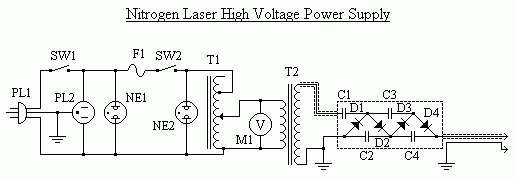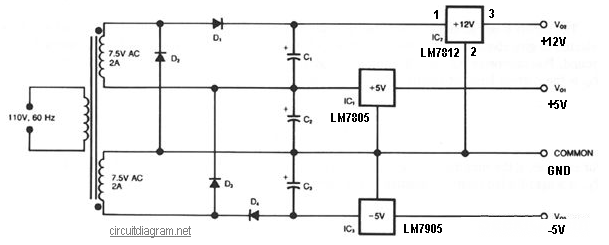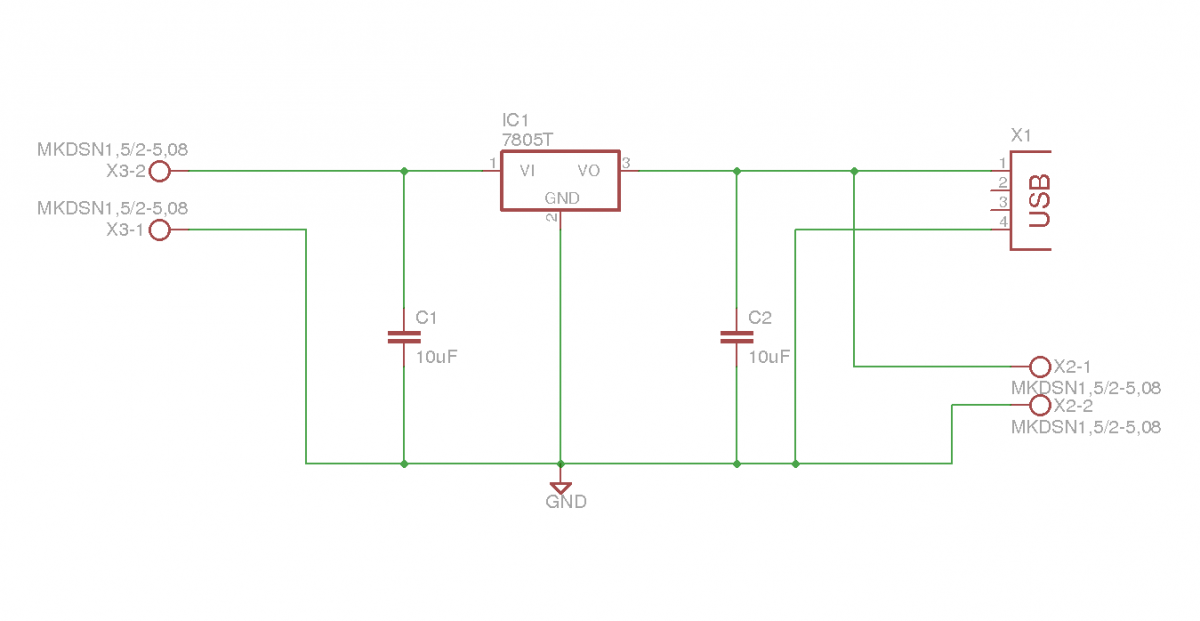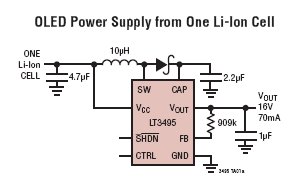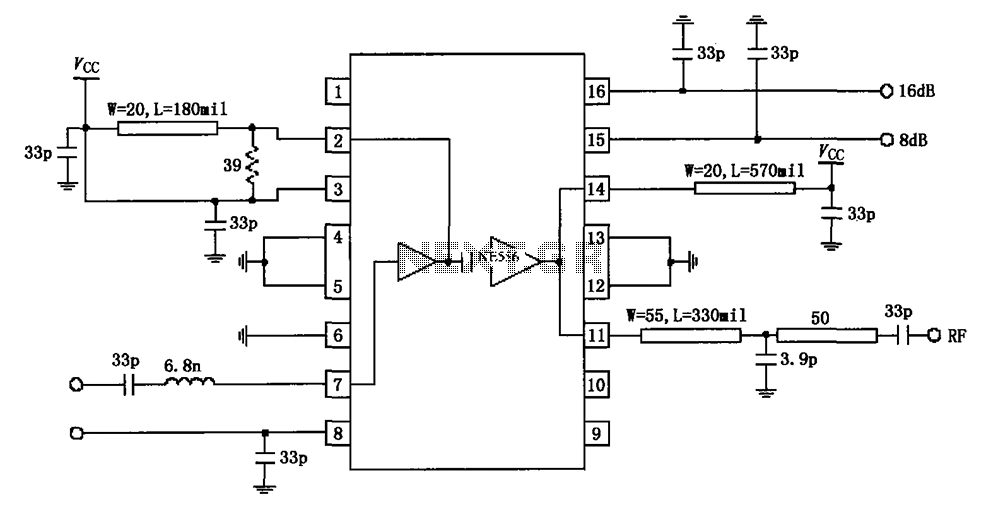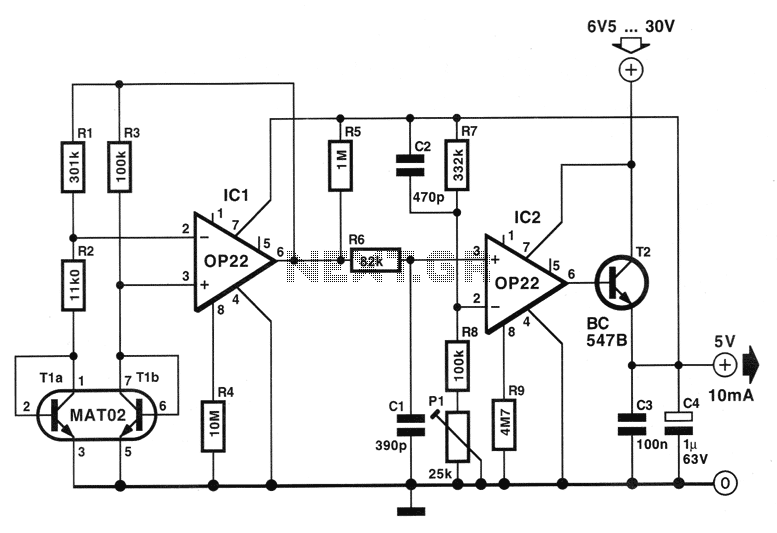
5V power supply with overvoltage protection

For circuits using TTL ICs, the supply voltage is a significant concern, as even a slight increase from the rated 5V can damage the IC. Relying solely on fuses is insufficient since a fuse may take several milliseconds to blow, which is enough time for the IC to sustain damage. This circuit employs a crowbar scheme in which a triac shorts the power supply and burns the fuse. The burning time of the fuse is not a concern because the power supply is already shorted by the triac, resulting in an output voltage of zero. When the output voltage exceeds 5.6 volts, the zener diode D2 conducts and turns ON the triac T1. At this point, T1 functions as a closed switch, shorting the circuit. Consequently, the output voltage drops to zero, and the fuse burns out. As the triac switches within a few microseconds, there will be no damage to the TTL ICs or any other voltage-sensitive components in the load circuit.
The described circuit is an effective overvoltage protection mechanism specifically designed for TTL IC applications. It addresses the critical issue of supply voltage fluctuations that can lead to component failure. The crowbar circuit utilizes a triac (T1) and a zener diode (D2) to provide rapid response to voltage spikes.
In this configuration, the zener diode is set to a breakdown voltage of 5.6 volts. Under normal operating conditions, the output voltage remains below this threshold, and the zener diode remains non-conductive. However, when the output voltage exceeds 5.6 volts, the zener diode enters its conductive state, triggering the gate of the triac T1. This rapid switching action effectively creates a short circuit across the power supply, leading to an immediate drop in output voltage to zero.
The fuse in the circuit serves as a secondary safety measure. While it may take longer to physically blow, the immediate action of the triac ensures that the sensitive TTL ICs are insulated from prolonged exposure to excessive voltage. The fuse will eventually burn out, providing a fail-safe mechanism that maintains the integrity of the circuit components.
The design of this circuit is crucial in environments where voltage spikes are common, ensuring that TTL ICs and similar devices are protected from damage. The combination of the triac and zener diode allows for a swift response to overvoltage conditions, significantly enhancing the reliability and longevity of the electronic system. This crowbar protection scheme is particularly valuable in industrial applications, consumer electronics, and any system where voltage stability is paramount for operational safety and performance.For circuits using TTL ICs the supply voltage is a great concern and a slight increase in supply from the rated 5V may damage the IC. Using fuses alone does not solve the problem because a fuse may take several milliseconds to blow off and that`s enough time for the IC to get damaged.
In this circuit a crowbar scheme is used in which a triac short circuits the power supply and burns the fuse. The burning time of the fuse is not a concern because the power supply is already shorted by the triac and the output voltage will be zero. When the output voltage exceeds 5. 6 volts the zener diode D2 conducts and switches ON the triac T1. Now T1 acts as a closed switch, shorting the circuit. The output voltage drops to zero and fuse gets burned off. Since the switching of triac takes place within few micro seconds there will be no damage to the TTL ICs or any other such voltage sensitive components in the load circuit.
🔗 External reference
The described circuit is an effective overvoltage protection mechanism specifically designed for TTL IC applications. It addresses the critical issue of supply voltage fluctuations that can lead to component failure. The crowbar circuit utilizes a triac (T1) and a zener diode (D2) to provide rapid response to voltage spikes.
In this configuration, the zener diode is set to a breakdown voltage of 5.6 volts. Under normal operating conditions, the output voltage remains below this threshold, and the zener diode remains non-conductive. However, when the output voltage exceeds 5.6 volts, the zener diode enters its conductive state, triggering the gate of the triac T1. This rapid switching action effectively creates a short circuit across the power supply, leading to an immediate drop in output voltage to zero.
The fuse in the circuit serves as a secondary safety measure. While it may take longer to physically blow, the immediate action of the triac ensures that the sensitive TTL ICs are insulated from prolonged exposure to excessive voltage. The fuse will eventually burn out, providing a fail-safe mechanism that maintains the integrity of the circuit components.
The design of this circuit is crucial in environments where voltage spikes are common, ensuring that TTL ICs and similar devices are protected from damage. The combination of the triac and zener diode allows for a swift response to overvoltage conditions, significantly enhancing the reliability and longevity of the electronic system. This crowbar protection scheme is particularly valuable in industrial applications, consumer electronics, and any system where voltage stability is paramount for operational safety and performance.For circuits using TTL ICs the supply voltage is a great concern and a slight increase in supply from the rated 5V may damage the IC. Using fuses alone does not solve the problem because a fuse may take several milliseconds to blow off and that`s enough time for the IC to get damaged.
In this circuit a crowbar scheme is used in which a triac short circuits the power supply and burns the fuse. The burning time of the fuse is not a concern because the power supply is already shorted by the triac and the output voltage will be zero. When the output voltage exceeds 5. 6 volts the zener diode D2 conducts and switches ON the triac T1. Now T1 acts as a closed switch, shorting the circuit. The output voltage drops to zero and fuse gets burned off. Since the switching of triac takes place within few micro seconds there will be no damage to the TTL ICs or any other such voltage sensitive components in the load circuit.
🔗 External reference
